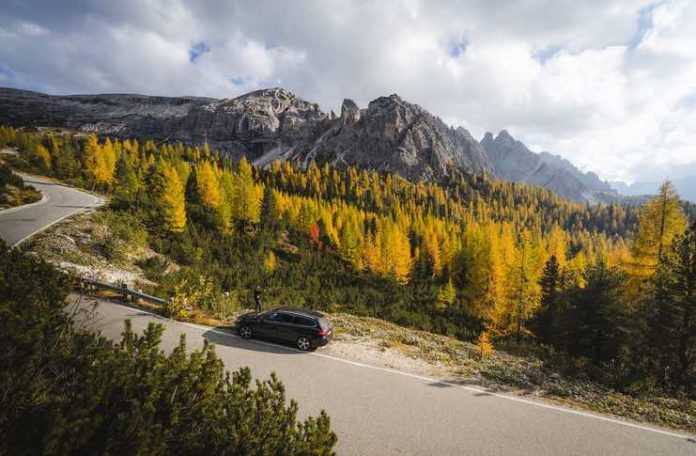
Summer sets in, signaling the beginning of new adventures and journeys, and the whimsy of a road trip calls people all over America as the preferred mode of travel. There are so many fascinating and awe-striking destinations to visit by car in the US. Before you take off, however, it is crucial to approach these trips with prudence and prepare for any potential roadside emergencies.
Life is unpredictable, and by taking proactive measures you can maintain your safety and improve the likelihood of receiving timely assistance in case of an unforeseen crisis.
The importance of being prepared
When preparing for a roadside emergency this summer, it is essential to bear in mind a few significant factors:
- The weather can be unpredictable (rain, lightning, hail, hurricanes, tornadoes, heat waves, etc.) hot weather can exert additional stress on your vehicle.
- A surge of people hit the road during the summer months with more drivers on the road than any other time of the year. This elevates the risk of accidents and collisions.
- Many people take longer road trips during the summer, which means they are more likely to experience fatigue, breakdowns and other emergencies.
In the event of a roadside emergency, here’s what you should do
If you experience a roadside emergency, it is imperative to your safety that you remain calm. Panicking can only make the situation worse. Calmly assess your circumstances and determine the best course of action. Ask yourself, what immediate steps can I take now and what resources do I need that I cannot address by myself. If you can safely fix the problem yourself, do so. If you cannot fix the problem yourself, call for help. If you or a loved one is injured in the course of a roadside emergency, the experts at Manning Law recommend exchanging contact information with everyone involved, filing a police report and going to the hospital if necessary.
How to be prepared for a roadside emergency during the summer
Maintain your safety and peace of mind by going into every road trip with a roadside emergency plan. There are many things to consider in your preparation, so here are a few tips:
Keep a roadside kit in your car.
Keep a bag or bin with your roadside kit in your trunk. A roadside emergency kit should include items like:
- Tire-pressure gauge
- Scissor jack
- Lug wrench
- Duct Tape
- Poncho
- Car Escape Tool
- Emergency Mylar Blankets
- Flashlight
- Batteries
- Flares
- Jumper Cables
- A First-Aid Kit
- Fire Extinguisher
Know how to use your car’s roadside features.
Many cars come equipped with features such as roadside assistance, cruise control, navigation systems, blind spot monitoring, and hazard lights. Make sure you know how to use these features before beginning your trip, in case of an emergency. If you do not have roadside assistance included with your car, consider enrolling in a program in advance.
Stay informed about the weather.
In much of the United States, summer weather can be volatile and ever-evolving. If you are traveling in an area that is prone to bad weather, be sure to stay informed about the forecast. This will help you to plan your trip accordingly and avoid any unwelcome surprises. If you do run into inclement weather, err on the side of caution and consider pulling over until road conditions improve.
Be aware of your surroundings.
When you’re on a road trip, it’s easy to get caught up in the excitement of the journey and forget to pay attention to your surroundings. But staying aware of your surroundings is essential for staying safe on the road.
- Keep your eyes on the road. This may seem like a no-brainer, but it’s important to really focus on what’s happening in front of you. Don’t let your eyes wander to the scenery or the radio.
- Be aware of your surroundings. Pay attention to the other cars on the road, as well as pedestrians, cyclists, and animals. Be on the lookout for potential hazards, such as construction zones, traffic jams, and bad weather.
- Take breaks. Don’t try to drive for too long without taking a break.
Take breaks from driving every few hours to get out of the car and stretch your legs. This will help you stay alert and focused
- Don’t drive under the influence. Alcohol and drugs can impair your judgment and reaction time, making it more difficult to stay safe on the road. If you’re going to drink, don’t drive. And if you’re taking medication, make sure you know how it will affect your driving.
Plan your stops in advance.
While there is something romantic about going on a spontaneous trip and seeing where the wind takes you, planning your stops can significantly increase your safety and help you avoid roadside emergencies far from refuge or help. Thoroughly look over your route in advance and familiarize yourself with the areas, paying close attention to very remote areas. Mark well-reviewed camp sites, gas stations, restaurants, and lodging that you plan on stopping at in advance of your trip. For additional help, you can refer to one of the many road trip planning apps available on your mobile device.
This summer should be about fun and creating new memories. By preparing for the future and creating a roadside emergency plan, you can help ensure your family’s adventure goes off without a hitch! Always prioritize safety to avoid regrets.
Additional tips
In addition to the above-listed tips here are a few easy things you can do to enhance your safety:
- Keep a spare tire in your car. This will save you time and hassle if you get a flat tire.
- Carry an extra gallon of water and some snacks in your car. This will help you stay hydrated and energized if you are stranded for an extended period of time.
-
Ensure you inform someone of your destination and anticipated arrival time. This way, if you do not arrive on time, someone will know to look for you!









